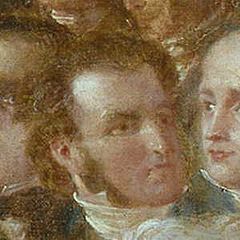James Carlile facts for kids
Quick facts for kids
Reverend James Carlile
|
|
|---|---|

In 1840
|
|
| Born | 5 February 1784 |
| Died | 1854 (aged 69–70) |
| Resting place | Birr |
| Nationality | Scottish |
| Education | Paisley Grammar School, University of Glasgow and University of Edinburgh |
| Occupation | Clergyman, writer |
| Spouse(s) | Jane Wren (of Kendal |
| Children | two sons |
James Carlile (1784–1854) was a Scottish clergyman from Paisley. He served as a minister in a Scots church in Dublin. He also worked as an Irish commissioner for education. Carlile is known for helping to create a new way of educating children in Ireland. This system allowed children from different religious backgrounds to attend the same schools.
Contents
About James Carlile
James Carlile was born in Paisley, Scotland. He went to Paisley Grammar School. Later, he studied to become a minister at the University of Glasgow and the University of Edinburgh. In 1811, he was allowed to preach by the Presbyterians in Paisley. By 1815, he was working at the "Scots' Church" in Dublin.
In 1825, Carlile became the leader, or moderator, of the synod of Ulster. This was an important role in the Presbyterian church.
Education for Everyone
In 1831, James Carlile was chosen to be a commissioner for the new Irish board of national education. He helped create a new and important education system. This system was special because it allowed both Protestant and Catholic children to learn together in the same schools. The only time they separated was for religious lessons.
Carlile worked on the school board with important religious leaders. These included the Anglican Archbishop Richard Whately and the Roman Catholic Archbishop Daniel Murray. Both archbishops thought highly of Carlile. This was true even though some people from their own churches disagreed with the new system.
By 1839, Carlile had dealt with many arguments about the new schools. He also helped create new textbooks. He even helped set up a new teacher training college in Dublin, where he taught as a professor. This new education system was a big change for Ireland.
Carlile also wrote a geography book. In it, he described a trip around the world. He included England, Ireland, Wales, and Scotland as part of the "British Empire in Europe."
Helping Others and Fighting Slavery
In 1839, Carlile convinced his church to let him become a missionary. He went to a church in Birr. This church had left the Roman Catholic Church and wanted to join the Presbyterians. Carlile worked as a missionary there, but he also kept up with other interests.
Carlile traveled to London on June 12, 1840. He went to the World Anti-Slavery Convention. This was a big meeting where people from many countries came together to fight against slavery. The image in his infobox shows him in a painting made to remember this event. Delegates from places like America, France, and Australia attended.
In 1845, Carlile became the moderator of the church's general assembly. This was a very important position. In the same year, he received a special degree called a Doctorate in Divinity from Glasgow University.
Carlile moved back to Dublin in 1852 after his wife, Jane, passed away in Birr. He died at his home in Rathmines, Dublin, on March 31, 1854. After a church service in Dublin, he was buried in Birr.
His Writings
James Carlile wrote many books and sermons during his life. Here are some of them:
- Sermons on Faith and Repentance, London, 1821.
- The Apocryphal Controversy summed up, Glasgow, 1827.
- On the Constitution of the Primitive Churches, Dublin, 1831.
- Letters on the Divine Origin and Authority of Scripture, 2 vols., London, 1833.
- On the First and Second Advents, Edinburgh, 1848.
- Fruit gathered from among Roman Catholics in Ireland, London, 1848.
- The Papal Invasion: how to repel it, London, 1850.
- Manual of the Anatomy and Physiology of the Human Mind, London, 1851.
- Station and Occupation of Saints in Final Glory, London, 1854.

